The First Iron Oxide Workshop and VI Colombian Mössbauer Spectrometry School event marks a pivotal convergence of diverse sectors, including academy, mining, medicine, energy transition, and more. This gathering will unite senior executives, managers, scientists, and the Mossbauer community. The event responds to the pressing demand for scientific and technological strides that optimize iron ore utilization and its multifaceted applications through enlightening courses, illuminating keynotes, and engaging discussions. In this pursuit, critical environmental and societal challenges also take centre stage as the event seeks to forge collaboration and progress within Colombia—a nation endowed with abundant iron oxide deposits and a fervent interest in perpetuating the study and utilization of the Mössbauer technique.
Simultaneously, the Sixth Colombian School of Mössbauer Spectroscopy emerges as a catalyst for knowledge sharing and collaborative synergies, amalgamating Research Groups and international luminaries. Encompassing fundamental and advanced courses in
Mössbauer Spectroscopy while spotlighting strides in instrumentation, this academic event propels research diffusion through presentations. Rooted in the Mössbauer effect’s discovery in the 1950s, this technique has been pivotal in unravelling atomic, nuclear, chemical, and magnetic intricacies of matter. Its far-reaching applications span solid-state physics, magnetism, metallurgy, chemistry, and biophysics. The school’s primary mission persists: to perpetuate Mössbauer Spectroscopy’s prominence, especially among students across scientific and engineering disciplines, capitalizing on its cost-effective allure and multifaceted contributions across domains.
The First Iron Oxide Workshop explores the versatile realm of iron oxide particles arising from water reactions under diverse redox and pH conditions. These particles, encompassing magnetite, maghemite, goethite, hematite, and akaganeite, find relevance across academia, water treatment, electronics, new energy production, cosmetics, medicine, and the paint industry. Their minute scale, typically under 100 nm, coupled with heightened reactivity due to expansive surface area, underpins their adaptability. Within biomedicine, these iron oxide particles showcase extraordinary potential in applications like magnetic hyperthermia, contrast agents for MRI imaging, precise drug delivery systems, and gene therapy. Furthermore, the intrinsic attributes of iron oxides, such as cost-effectiveness, redox adaptability, magnetic properties, and efficient adsorption, make them highly desirable for water treatment applications. Iron ore formation and the subsequent oxidation of minerals like magnetite appear to hold promise as sources for generating hydrogen gas (H2). Consequently, extensive research spanning recent decades has meticulously honed the synthesis of iron oxide particles, with a dedicated emphasis on comprehending their natural origins, size, shape, reproducibility, and comprehensive property characterization, often harnessing advanced techniques like Mössbauer spectroscopy and synchrotron methods. In light of these pursuits, the Workshop embraces a diverse spectrum of topics, encompassing:
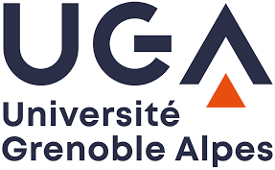
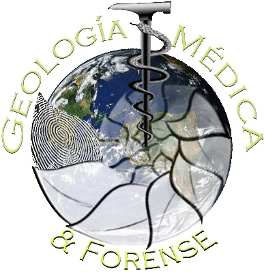

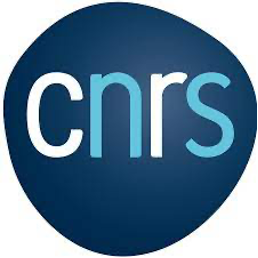
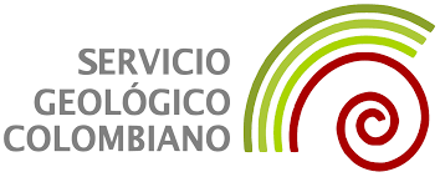
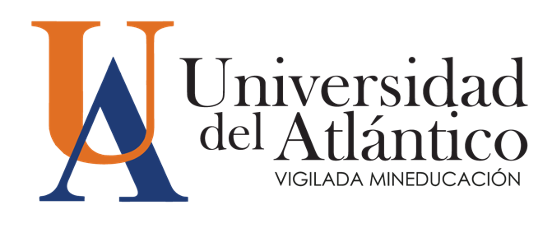
Students $150,000.00 COP
Professionals $250,000.00 COP
Registration to attend the Mössbauer school, intensive courses and Workshop on iron minerals is now open.
Please fill out the information below, then click on the next step to finalize your registration by making the required payment:
Please pay the registration fee into the savings account FiduDavivienda No. 482800028714 and send proof of payment to zuliacaamano@mail.uniatlantico.edu.co.
Note. Each transaction must be reported with its corresponding proof of payment. Your prompt attention to this matter is greatly appreciated. Thank you!
We cordially invite attendees to submit abstracts for oral and poster presentations within the dedicated focus areas of the Workshop. Emphasize the current state-of-the-art research and address future research requirements in your submissions. Kindly send your abstract using the provided template to: zuliacaamano@mail.uniatlantico.edu.co & leydy-carolina.guida-manrique@univ-grenoble-alpes.fr. [Download the Abstract Template Here]
Each oral presentation, preferably in English, will be given in a 30-minute format, followed by a 10-minute Q&A session.
To determine if you need a visa to attend the event in Colombia, please review the information on the Ministry of Foreign Affairs website:
https://www.cancilleria.gov.co/tramites_servicios/visa/lista-a-b-c
To travel from any part of Colombia to Barranquilla, here are some suggestions on how to find transportation:
For Air Travel Transfers
https://www.avianca.com/co/en/
https://www.wingo.com/en
https://www.latamairlines.com/co/es
For Bus Transfers
https://www.redbus.co/
From the Ernesto Cortissoz International Airport to the Cultural Center:
Popular rideshare services such as InDriver (https://indrive.com/es/city/), DiDi (https://web.didiglobal.com/co/pasajero/), and traditional taxi services offer a convenient door-to-door transportation solution. This allows you to effortlessly navigate your way around without the hassle of parking. The fare for a ride between the airport and the Cultural Center may vary, typically falling within the range of $20,000 COP to $30,000 COP.
You may utilize the Transmetro service to reach the Universidad del Atlántico, main entrance Carrera 51B. Subsequently, a walk of approximately 5 minutes will lead you to the Cultural Center. The estimated travel time is around 15-20 minutes, and the fare for this service is $3,000.00 COP. Alternatively, you can opt for the Puerto Colombia bus, which will take you to the bus stop. Following this, a 15-minute stroll will bring you to the Cultural Center. The expected travel time for this route is approximately 15 minute, and the cost is $2,800.00 COP.
Welcome to Barranquilla, a city renowned for its vibrant Carnival, the second-largest of its kind globally.
Discover the cultural richness of the city by exploring iconic sites such as Malecón del Río, Barrio El Prado, Restaurante Bar La Cueva, La Casa del Carnaval, Museo Romántico, La Troja, Ciénaga de Mallorquín and Las Flores. For comprehensive information about Barranquilla and a guide to tourist destinations and activities throughout Colombia, please refer to the following link:
https://colombia.travel/en/barranquilla
Prof Dr Zulia Isabel Caamaño De Avila (Universidad del Atlántico, Colombia)
PhD(c) Carolina Guida (ISTERRE, France)
Prof Dr Jean Marc Greneche (IMMM, Dr em., France)
Prof Dr Laurent Charlet (ISTERRE, France)
Prof Dr Zulia Isabel Caamaño De Avila (Uniatlantico, Colombia)
On-site Organizing Committee:
Registration Desk Staff: CyCAM research group, Physic Program, Universidad del Atlántico
Technical Support: Communications office, Universidad del Atlántico, Puerto Colombia, Colombia.
Session Moderators: Invited speakers
Dr. Zulia Caamaño De Ávila
Universidad del Atlántico
Sede norte: Cra 30 # 8-49 Puerto Colombia, Colombia
Director of the Research Group on Science and Characterization of Materials, Universidad del Atlántico
Email: zuliacaamano@mail.uniatlantico.edu.co
Phone: +57 3156528252
PhD(c) Carolina Guida
Grenoble Alpes University
Institute of Earth Science (ISTerre-OSUG UMR 5275)
CS 40700, 38058 Grenoble Cedex 9, France
Email: leydy-carolina.guida-manrique@univ-grenoble-alpes.fr
Phone: +33 621608804

Universidad del Atlántico
We firmly believe that the internet should be available and accessible to anyone, and are committed to providing a website that is accessible to the widest possible audience, regardless of circumstance and ability.
To fulfill this, we aim to adhere as strictly as possible to the World Wide Web Consortium’s (W3C) Web Content Accessibility Guidelines 2.1 (WCAG 2.1) at the AA level. These guidelines explain how to make web content accessible to people with a wide array of disabilities. Complying with those guidelines helps us ensure that the website is accessible to all people: blind people, people with motor impairments, visual impairment, cognitive disabilities, and more.
This website utilizes various technologies that are meant to make it as accessible as possible at all times. We utilize an accessibility interface that allows persons with specific disabilities to adjust the website’s UI (user interface) and design it to their personal needs.
Additionally, the website utilizes an AI-based application that runs in the background and optimizes its accessibility level constantly. This application remediates the website’s HTML, adapts Its functionality and behavior for screen-readers used by the blind users, and for keyboard functions used by individuals with motor impairments.
If you’ve found a malfunction or have ideas for improvement, we’ll be happy to hear from you. You can reach out to the website’s operators by using the following email
Our website implements the ARIA attributes (Accessible Rich Internet Applications) technique, alongside various different behavioral changes, to ensure blind users visiting with screen-readers are able to read, comprehend, and enjoy the website’s functions. As soon as a user with a screen-reader enters your site, they immediately receive a prompt to enter the Screen-Reader Profile so they can browse and operate your site effectively. Here’s how our website covers some of the most important screen-reader requirements, alongside console screenshots of code examples:
Screen-reader optimization: we run a background process that learns the website’s components from top to bottom, to ensure ongoing compliance even when updating the website. In this process, we provide screen-readers with meaningful data using the ARIA set of attributes. For example, we provide accurate form labels; descriptions for actionable icons (social media icons, search icons, cart icons, etc.); validation guidance for form inputs; element roles such as buttons, menus, modal dialogues (popups), and others. Additionally, the background process scans all the website’s images and provides an accurate and meaningful image-object-recognition-based description as an ALT (alternate text) tag for images that are not described. It will also extract texts that are embedded within the image, using an OCR (optical character recognition) technology. To turn on screen-reader adjustments at any time, users need only to press the Alt+1 keyboard combination. Screen-reader users also get automatic announcements to turn the Screen-reader mode on as soon as they enter the website.
These adjustments are compatible with all popular screen readers, including JAWS and NVDA.
Keyboard navigation optimization: The background process also adjusts the website’s HTML, and adds various behaviors using JavaScript code to make the website operable by the keyboard. This includes the ability to navigate the website using the Tab and Shift+Tab keys, operate dropdowns with the arrow keys, close them with Esc, trigger buttons and links using the Enter key, navigate between radio and checkbox elements using the arrow keys, and fill them in with the Spacebar or Enter key.Additionally, keyboard users will find quick-navigation and content-skip menus, available at any time by clicking Alt+1, or as the first elements of the site while navigating with the keyboard. The background process also handles triggered popups by moving the keyboard focus towards them as soon as they appear, and not allow the focus drift outside it.
Users can also use shortcuts such as “M” (menus), “H” (headings), “F” (forms), “B” (buttons), and “G” (graphics) to jump to specific elements.
We aim to support the widest array of browsers and assistive technologies as possible, so our users can choose the best fitting tools for them, with as few limitations as possible. Therefore, we have worked very hard to be able to support all major systems that comprise over 95% of the user market share including Google Chrome, Mozilla Firefox, Apple Safari, Opera and Microsoft Edge, JAWS and NVDA (screen readers).
Despite our very best efforts to allow anybody to adjust the website to their needs. There may still be pages or sections that are not fully accessible, are in the process of becoming accessible, or are lacking an adequate technological solution to make them accessible. Still, we are continually improving our accessibility, adding, updating and improving its options and features, and developing and adopting new technologies. All this is meant to reach the optimal level of accessibility, following technological advancements. For any assistance, please reach out to
